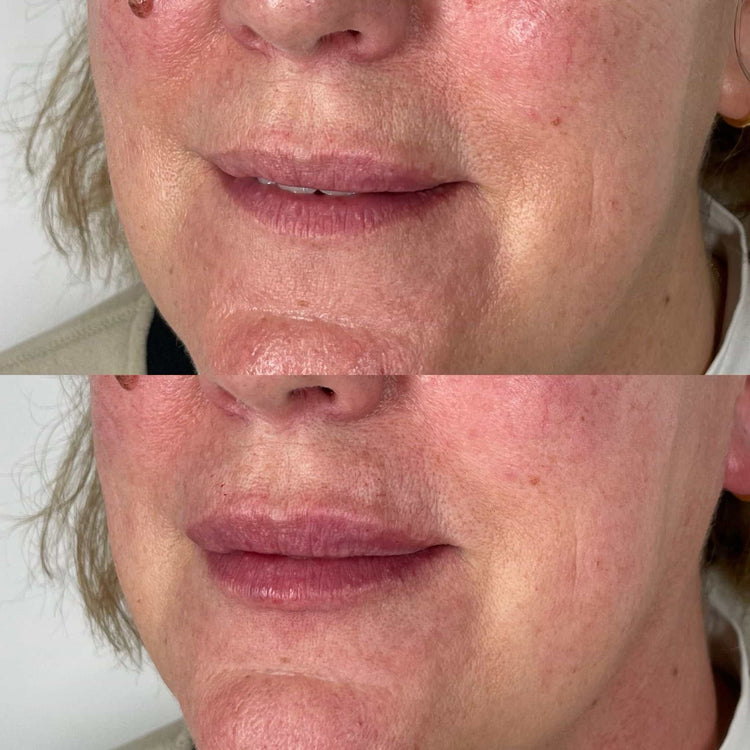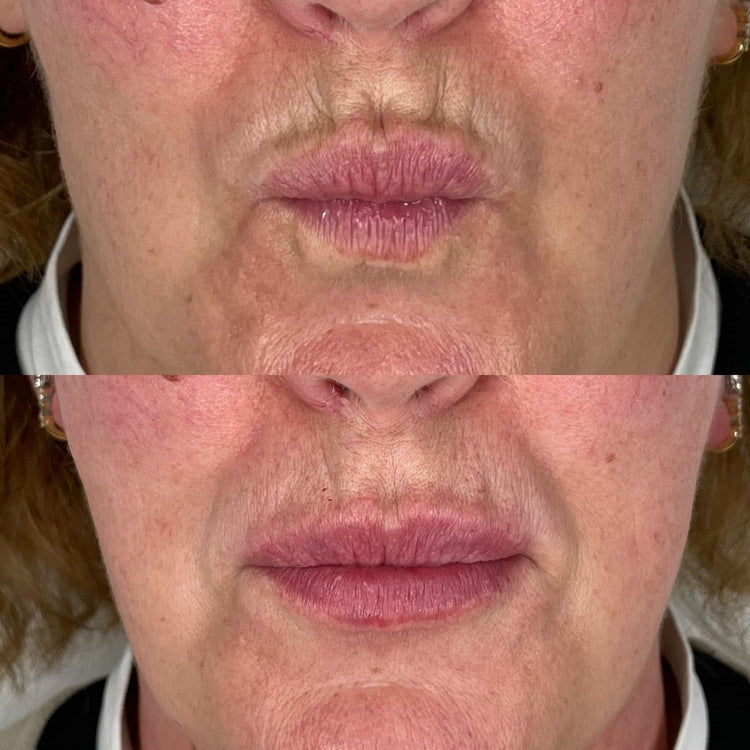The Rise of Dermal Fillers
In recent years, dermal fillers have experienced a surge in popularity, transforming from a niche cosmetic procedure into an essential part of skincare routines across the UK.
Increasing Demand for Non-Surgical Options
The rise of dermal fillers is driven by several factors. Firstly, non-surgical procedures offer a less invasive and more convenient alternative to traditional surgical facelifts or other invasive treatments. Dermal fillers can address concerns like wrinkles, volume loss, and facial asymmetry with minimal downtime and recovery.
Another contributing factor is the increasing accessibility of dermal fillers. The availability of a wider range of products, including those targeting specific concerns like lip enhancement or under-eye hollows, allows individuals to customize their treatment plans. Moreover, advancements in filler technology have resulted in safer and longer-lasting results.
The growing emphasis on maintaining youthful appearance and the influence of social media, which often showcases filtered and airbrushed images, have also contributed to the demand for dermal fillers.
Advancements in Filler Technology
The increasing accessibility of dermal fillers is a major factor driving their popularity. A wider variety of products cater to specific concerns like lip enhancement, under-eye hollows, or smoothing forehead lines, allowing individuals to tailor their treatment.
Advancements in filler technology have also played a crucial role.
- Newer hyaluronic acid-based fillers boast improved longevity and natural-looking results.
- Some fillers offer volumizing effects, while others are designed for fine lines and wrinkles.
- Technological innovations like micro-needling allow for more precise delivery and better integration of the filler with surrounding tissue.
Types of Dermal Fillers
Dermal fillers encompass a range of injectable substances designed to restore volume, smooth wrinkles, and enhance facial contours. These substances can be categorized into various types based on their composition and intended applications. Hyaluronic acid, a naturally occurring substance found in the body, is a popular filler known for its hydrating and volumizing properties. Other types include poly-L-lactic acid (PLLA), which stimulates collagen production, and calcium hydroxylapatite, a mineral that provides immediate volume.
Hyaluronic Acid Fillers
Dermal fillers encompass a range of injectable substances designed to restore volume, smooth wrinkles, and enhance facial contours. These substances can be categorized into various types based on their composition and intended applications. Hyaluronic acid, a naturally occurring substance found in the body, is a popular filler known for its hydrating and volumizing properties.

- Hyaluronic Acid Fillers
- Poly-L-lactic Acid (PLLA) Fillers
- Calcium Hydroxylapatite Fillers
Calcium Hydroxylapatite Fillers
Calcium hydroxylapatite fillers are a type of dermal filler made from calcium hydroxylapatite microspheres suspended in a gel. These microspheres act as scaffolding, stimulating the production of collagen and elastin, which are essential proteins for maintaining skin firmness and elasticity.
Calcium hydroxylapatite fillers provide immediate volume restoration and can be used to address various concerns such as wrinkles, folds, and facial contour irregularities. They are particularly effective in treating deep lines and wrinkles around the nose and mouth due to their strong lifting properties.
Poly-L-Lactic Acid (PLLA) Fillers
Poly-L-lactic acid (PLLA) fillers are a unique type of dermal filler that stimulates collagen production rather than simply adding volume like hyaluronic acid fillers.
PLLA is a synthetic biodegradable polymer that, when injected under the skin, triggers the body’s natural healing process. This process leads to the formation of new collagen fibers, resulting in gradual and long-lasting improvement in skin texture, firmness, and elasticity.
Unlike hyaluronic acid fillers, which provide immediate results, PLLA fillers require multiple treatments spaced several weeks apart for optimal results.
The effects of PLLA fillers become more pronounced over time as the collagen production continues, typically lasting up to two years or longer.
Common Applications of Dermal Fillers
Dermal fillers have rapidly emerged as a cornerstone of skincare in the UK, offering a non-invasive approach to address aesthetic concerns.
Wrinkle Reduction
The versatility of dermal fillers makes them suitable for a wide range of applications. A common use is wrinkle reduction. Fillers can effectively smooth out wrinkles and fine lines by plumping up the skin and restoring volume.
Another frequent application is lip enhancement. Fillers can add volume to the lips, making them appear fuller and more defined.
Dermal fillers are also used to address facial asymmetry. They can help balance out features that may be uneven or disproportionate.
Lip Augmentation
Dermal fillers have become increasingly popular in the UK for their ability to enhance various aspects of appearance without requiring surgery.
One common application is lip augmentation, which involves injecting filler material into the lips to increase their size and fullness. This can create a more youthful and defined look.
Cheek Enhancement
Cheek enhancement is another popular application of dermal fillers. Fillers can add volume to the cheeks, creating a more sculpted and lifted appearance. This can help restore lost volume that occurs with aging, resulting in a more youthful and symmetrical facial contour.
Contouring and Lifting

Dermal fillers are widely used to contour and lift various areas of the face. One common application is cheek augmentation, which involves injecting filler material into the cheeks to create a fuller and more defined appearance.
Fillers can also be used to enhance the jawline by adding volume to the area beneath the chin. This creates a more defined and sculpted look, improving facial proportions.
Dermal fillers are also used for non-surgical rhinoplasty, commonly known as “liquid nose job”. Fillers can subtly reshape the nose by adding volume or smoothing out bumps, achieving a refined nose shape without surgery.
Benefits of Dermal Fillers
Dermal fillers have rapidly become a cornerstone of skincare in the UK, offering a non-invasive approach to address aesthetic concerns.
Non-Invasive Procedure
Dermal fillers are injected substances that restore volume, smooth wrinkles, and enhance facial contours. They’ve grown immensely popular in the UK due to their effectiveness, minimal downtime, and non-surgical nature.
The versatility of dermal fillers makes them suitable for various applications, including wrinkle reduction, lip enhancement, and cheek augmentation.
They are particularly effective in treating dynamic wrinkles, those caused by repeated facial movements like smiling or frowning. Fillers can also plump up thin lips, creating a fuller and more youthful appearance.
In addition to their aesthetic benefits, dermal fillers can also improve facial symmetry. By strategically injecting filler material, practitioners can balance features that may be uneven or disproportionate, resulting in a more harmonious facial profile.
Relatively Quick Results
One of the most significant benefits of dermal fillers is their ability to provide relatively quick results. Unlike some surgical procedures that require lengthy recovery times, dermal fillers typically show noticeable improvements immediately after treatment.
Patients can often leave the clinic with a fresher and more youthful appearance, minimizing any downtime needed to recover.
This makes dermal fillers an attractive option for individuals who want to see immediate results and don’t have extensive time for recovery.
Customizable Treatments
Dermal fillers have rapidly become a cornerstone of skincare in the UK, offering a non-invasive approach to address aesthetic concerns.
The versatility of dermal fillers makes them suitable for various applications, including wrinkle reduction, lip enhancement, and cheek augmentation. They’ve grown immensely popular in the UK due to their effectiveness, minimal downtime, and non-surgical nature. Dermal fillers are injected substances that restore volume, smooth wrinkles, and enhance facial contours.
- Immediate Results: One of the most significant benefits of dermal fillers is their ability to provide relatively quick results. Unlike some surgical procedures that require lengthy recovery times, dermal fillers typically show noticeable improvements immediately after treatment.
Risks and Considerations
While dermal fillers offer numerous aesthetic benefits, it’s crucial to approach them with a clear understanding of the potential risks and considerations involved.
Potential Side Effects
Potential side effects of dermal filler injections can include redness, swelling, bruising, and tenderness at the injection site. These are generally mild and temporary, subsiding within a few days or weeks.
In some cases, more serious complications may arise, such as infection, allergic reactions, or vascular occlusion (blockage of blood vessels). It’s crucial to consult with a qualified and experienced medical professional before undergoing any dermal filler treatment to assess individual suitability and minimize the risk of adverse effects.
To minimize risks, it’s essential to choose a reputable practitioner who is properly trained and licensed in administering dermal fillers. The chosen practitioner should also have a thorough understanding of facial anatomy and the properties of different types of fillers.
It’s also important to follow all post-treatment instructions carefully to promote healing and minimize the risk of complications.
Patients should be aware that dermal filler results are not permanent and will gradually fade over time, typically lasting anywhere from 6 months to 2 years depending on the type of filler used and individual factors.
Importance of Choosing a Qualified Practitioner
Choosing a qualified practitioner is paramount when considering dermal fillers. A skilled practitioner possesses extensive knowledge of facial anatomy, understands various filler types and their applications, and adheres to strict sterilization protocols. Their expertise ensures safe administration, minimizes risks, and optimizes results.
Potential complications can arise from improper technique or using unsuitable fillers. A qualified practitioner will assess your individual needs, medical history, and skin type to determine the most appropriate treatment plan, minimizing potential risks.
It is crucial to remember that dermal fillers are not a permanent solution. Results gradually diminish over time, requiring repeat treatments to maintain desired effects.
Be sure to discuss your expectations, concerns, and any underlying medical conditions with your chosen practitioner to make informed decisions about your treatment.
Cost and Long-Term Maintenance
While dermal fillers offer numerous aesthetic benefits, it’s crucial to approach them with a clear understanding of the potential risks and considerations involved. Potential side effects of dermal filler injections can include redness, swelling, bruising, and tenderness at the injection site. These are generally mild and temporary, subsiding within a few days or weeks.
In some cases, more serious complications may arise, such as infection, allergic reactions, or vascular occlusion (blockage of blood vessels). It’s crucial to consult with a qualified and experienced medical professional before undergoing any dermal filler treatment to assess individual suitability and minimize the risk of adverse effects.
The cost of dermal fillers can vary depending on several factors, including the type of filler used, the volume injected, the area being treated, and the practitioner’s experience. Generally, expect to pay between £200 to £800 per treatment session.
Long-term maintenance involves repeat treatments as the effects of dermal fillers gradually fade over time, typically lasting from 6 months to 2 years depending on the type of filler used and individual factors.
The Future of Dermal Fillers in the UK
The future of dermal fillers in the UK looks promising, with continued growth expected driven by several factors. Advancements in filler technology will lead to even more effective, longer-lasting, and natural-looking results.
We can anticipate seeing a greater variety of hyaluronic acid-based fillers with improved longevity and tailored properties for specific concerns like acne scarring or skin laxity.
Moreover, research into novel biocompatible materials and biodegradable polymers will likely expand treatment options and offer more customizable solutions for individual needs.
Furthermore, the growing focus on preventative skincare will contribute to the popularity of dermal fillers as people seek proactive ways to maintain a youthful appearance.
As awareness of non-surgical aesthetic treatments increases, more individuals will explore dermal fillers as a safe and effective way to enhance their features.
The increasing accessibility of dermal fillers through clinics, spas, and online consultations will also play a role in their widespread adoption.
- Weed Drinks In Delaware DE - May 16, 2025
- Skin Injectables Near Capel, Surrey - May 16, 2025
- The Jockey – Best Anal Sex Positions - May 16, 2025
